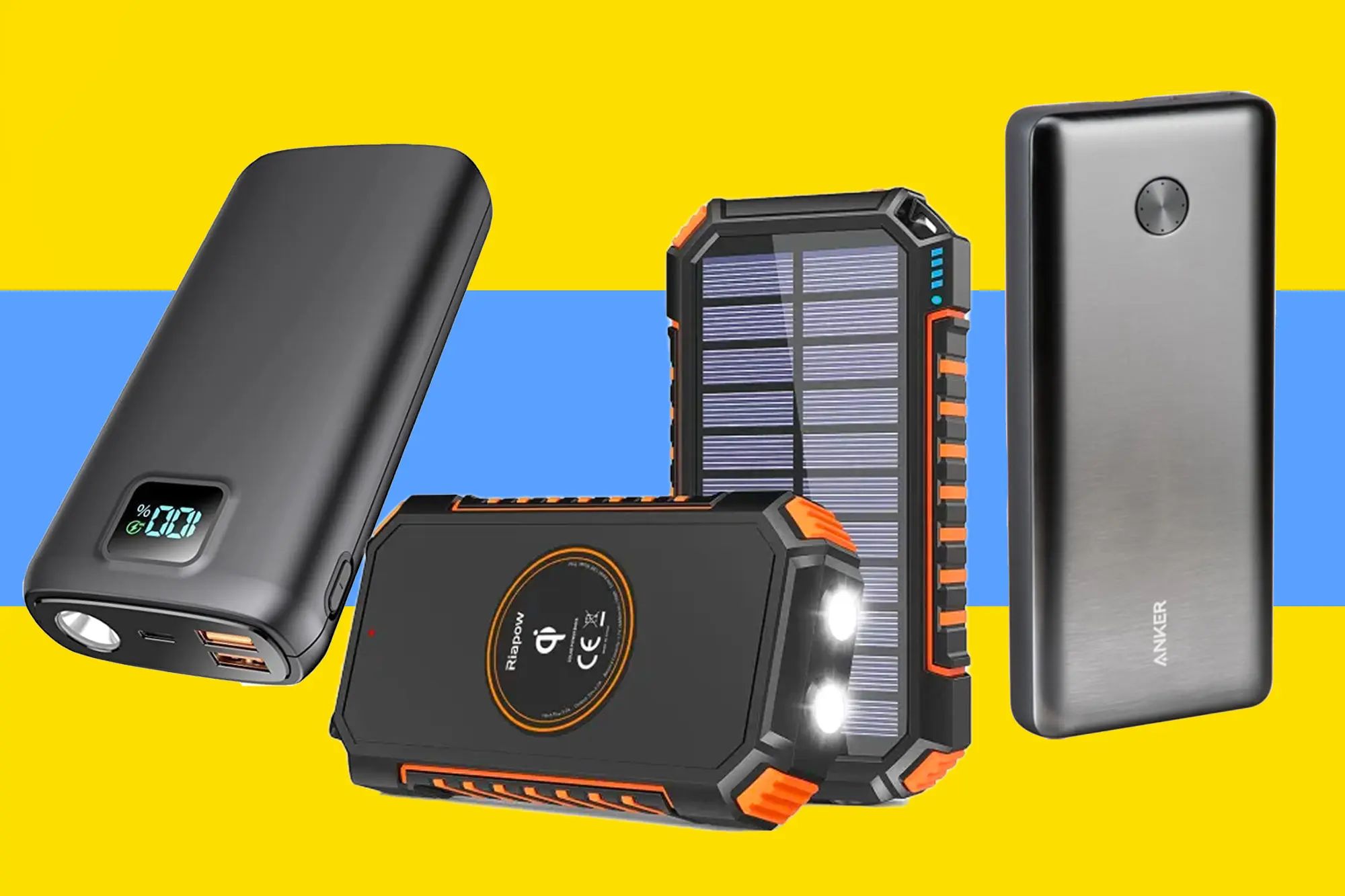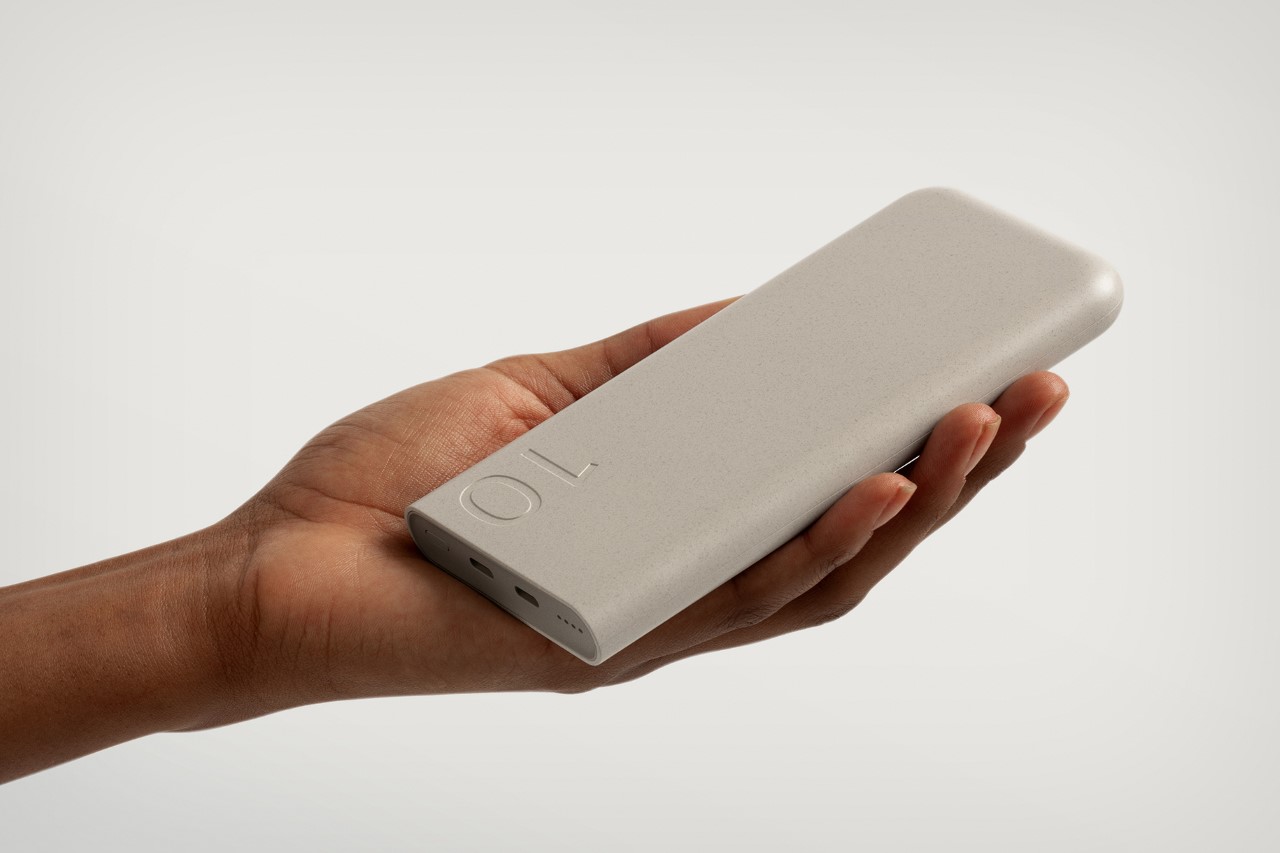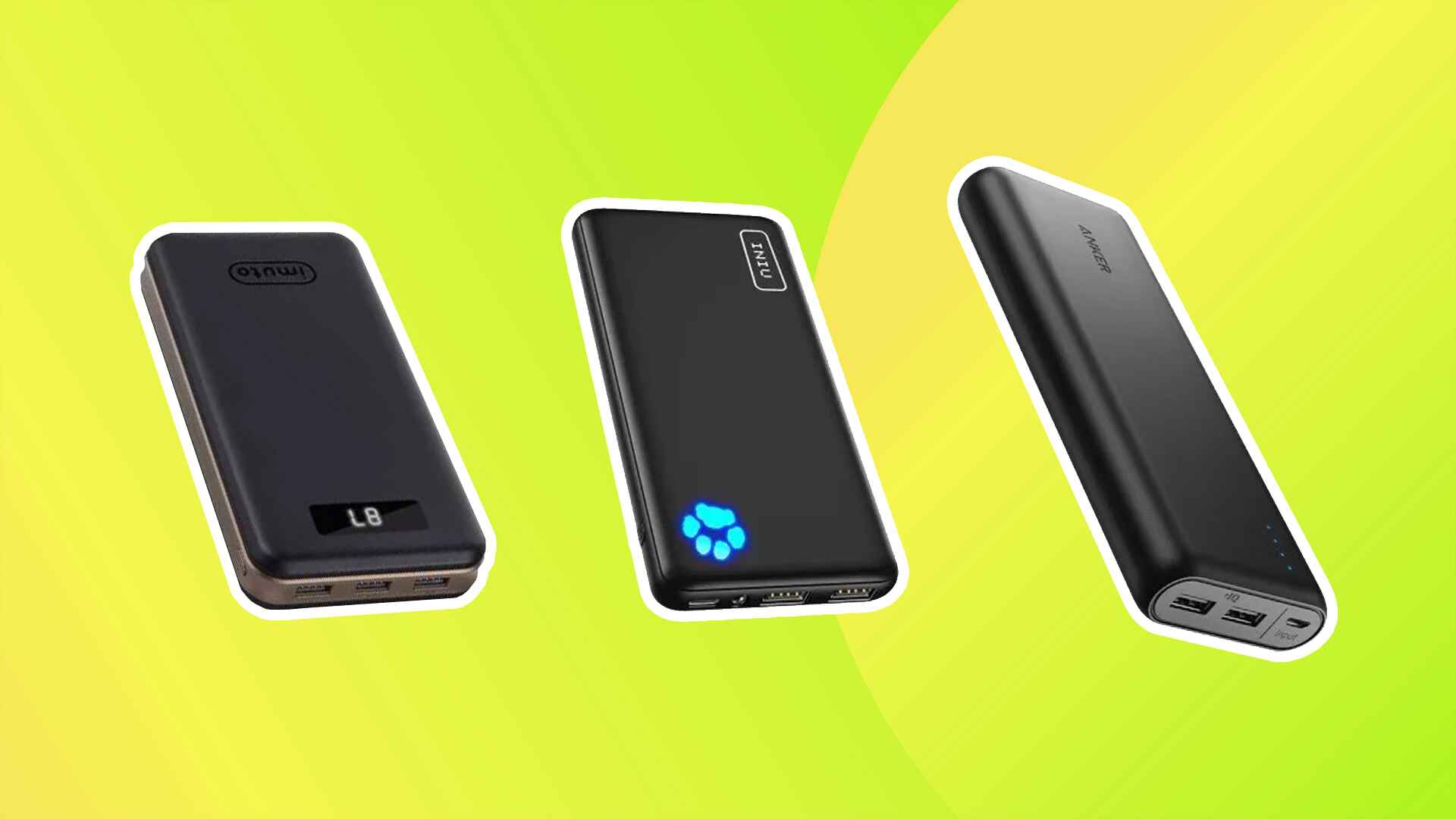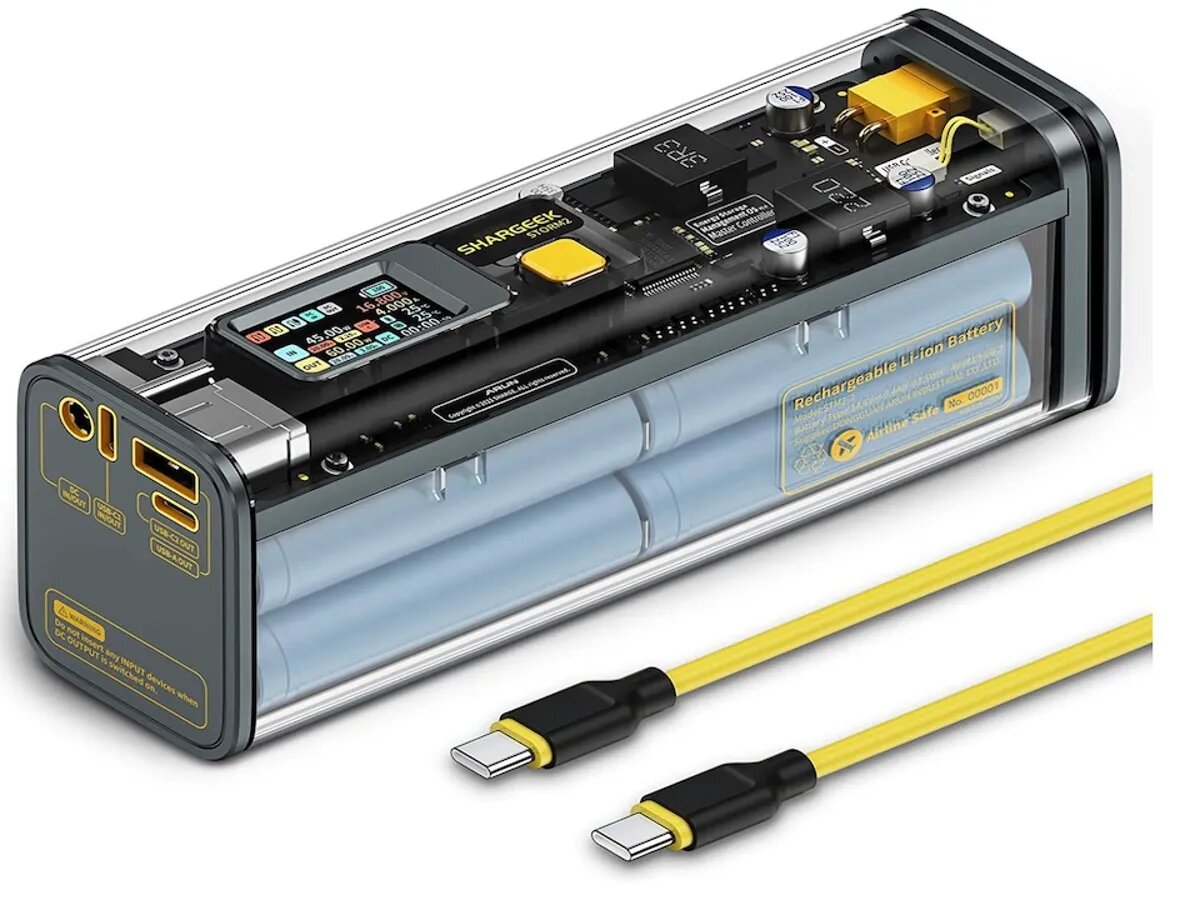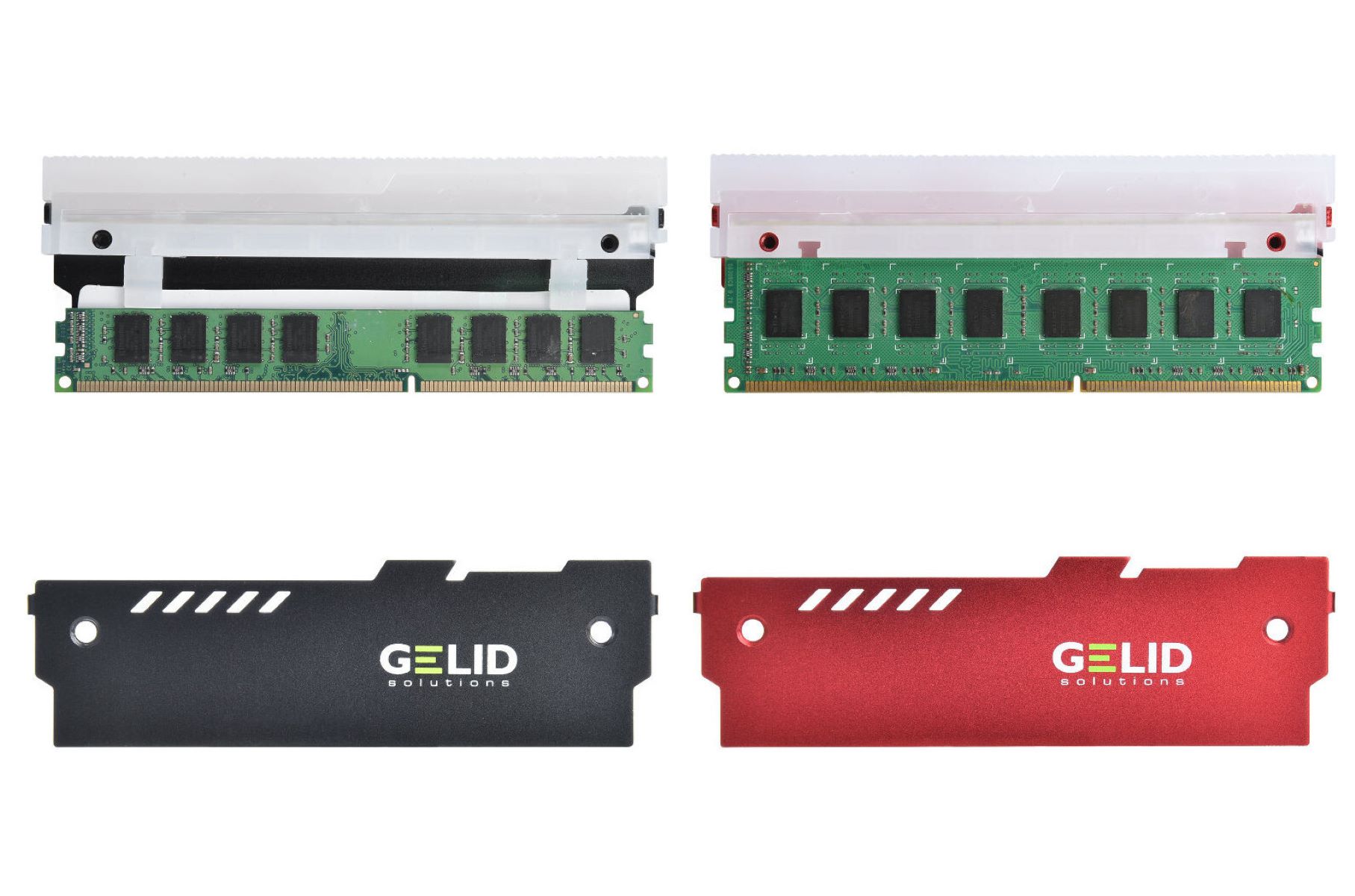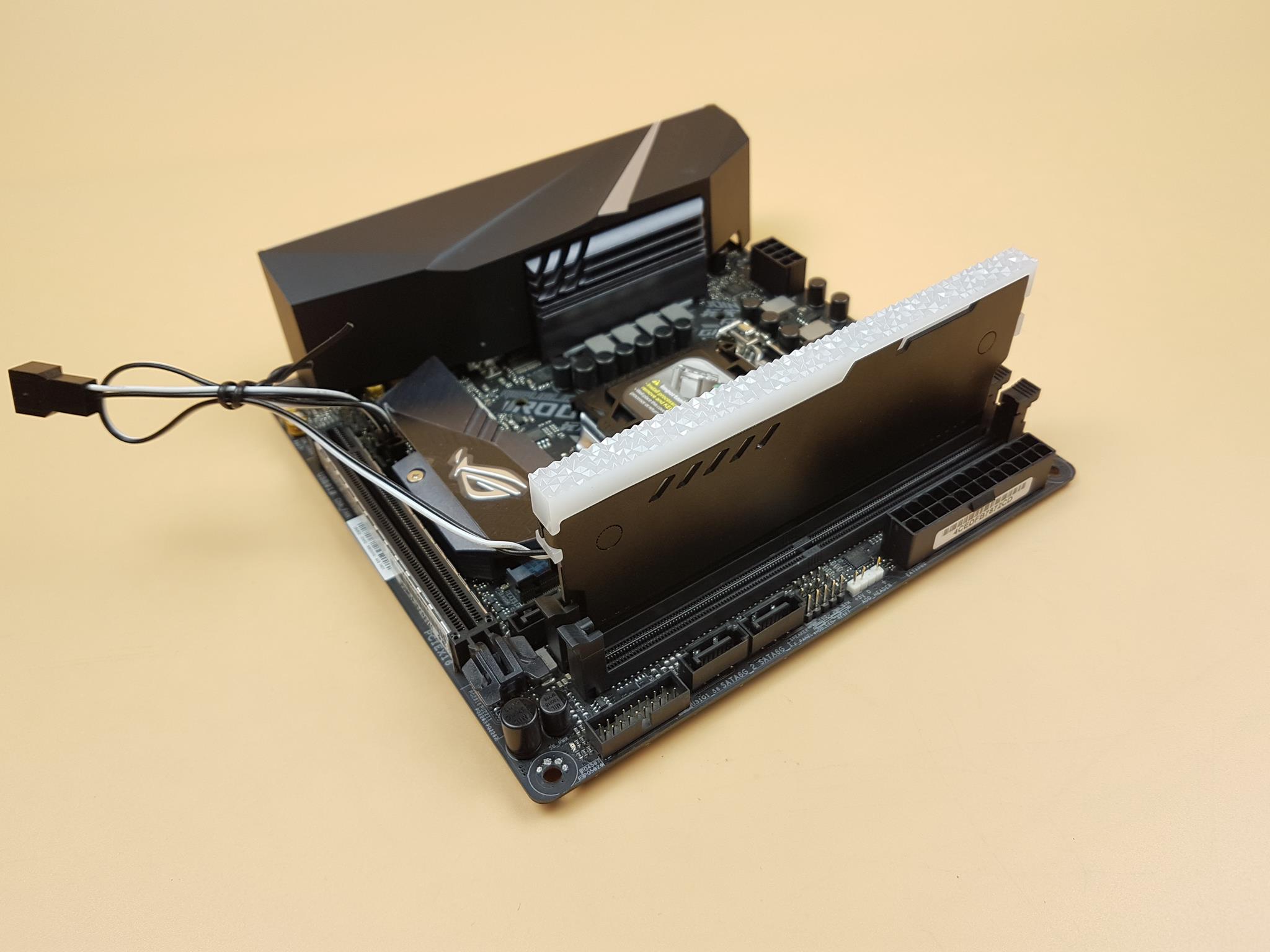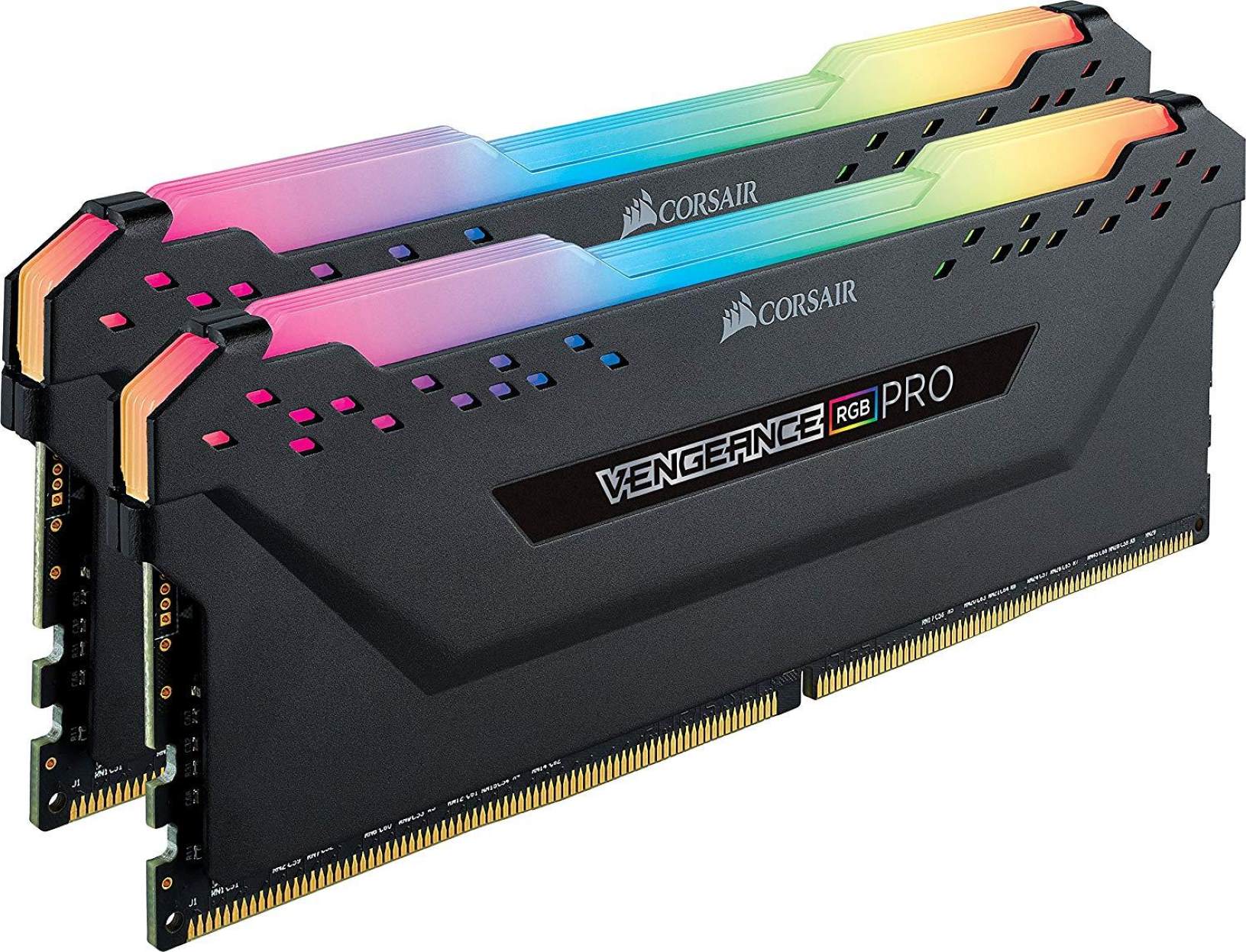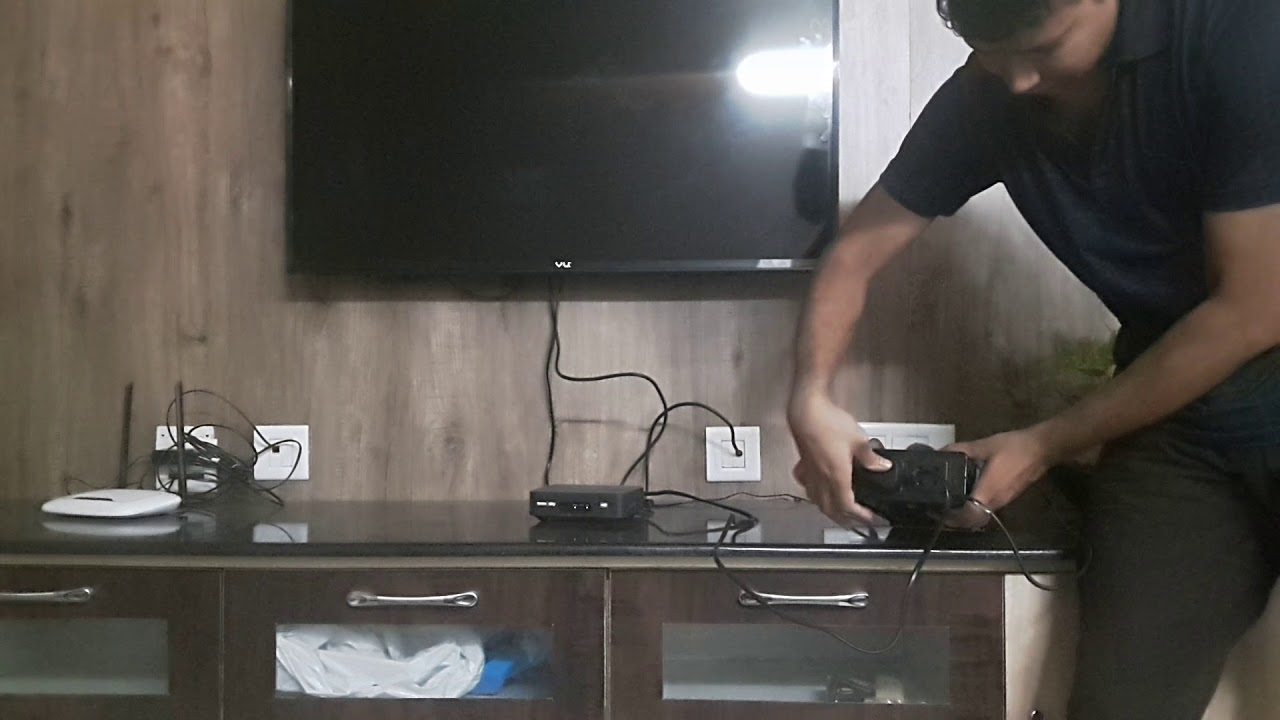Introduction
Welcome to the world of heated vests, where staying warm and comfortable in chilly weather becomes effortless. These innovative garments provide much-needed warmth by generating heat through built-in heating elements. However, to power these heating elements, you’ll need a reliable power source. This is where a power bank comes into play.
A power bank for a heated vest is not your ordinary portable charger. It needs to have specific features and capabilities to ensure efficient and uninterrupted heating performance. In this article, we will guide you through the factors to consider when choosing the right power bank for your heated vest.
With the wide variety of power banks available in the market, it is crucial to understand the important factors that will determine the compatibility and effectiveness of the power bank for your specific heated vest. By taking these factors into account, you can ensure that your heated vest functions optimally, allowing you to stay warm and cozy in cold temperatures.
We will discuss essential features such as the capacity of the power bank, output voltage and current, charging speed, portability, safety features, compatibility with your heated vest, and budget considerations. By the end of this article, you will be equipped with the knowledge to choose the power bank that suits your needs and ensures a comfortable and warm experience.
So, let’s dive in and explore the factors to consider when selecting the ideal power bank for your beloved heated vest.
Factors to Consider When Choosing a Power Bank for a Heated Vest
When it comes to choosing a power bank for your heated vest, there are several key factors to consider. Picking the right power bank will ensure that your heated vest operates efficiently and keeps you warm for extended periods. Let’s explore these factors in detail:
1. Capacity of the Power Bank: The capacity of the power bank is measured in mAh (milliampere-hour) and determines how much energy it can store. Consider the heating duration you require and choose a power bank with sufficient capacity to support your vest’s heating needs. Higher capacity power banks will generally last longer, but keep in mind that they may also be bulkier and heavier.
2. Output Voltage and Current: It is essential to ensure that the power bank’s output voltage and current are compatible with your heated vest. Check the voltage and current requirements of your vest’s heating elements and select a power bank that matches or exceeds these specifications. An incompatible power bank may not provide enough power to heat your vest or could potentially damage it.
3. Charging Speed: Consider the charging speed of the power bank, which is measured in amps (A) or watts (W). A power bank with a higher charging speed will recharge faster, allowing you to use your heated vest again sooner. Look for power banks with fast charging capabilities to minimize downtime.
4. Portability and Weight: Assess the size and weight of the power bank to ensure it is convenient to carry and use. If you plan on wearing your heated vest for outdoor activities or extended periods, a lightweight and compact power bank will be more comfortable to carry and won’t add unnecessary bulk.
5. Safety Features: Safety is paramount when dealing with battery-powered devices. Look for power banks with built-in safety features such as overcharge protection, short-circuit protection, and temperature control. These safety mechanisms will help prevent any accidents or damage to both the power bank and your heated vest.
6. Compatibility with the Heated Vest: Verify that the power bank is compatible with your specific heated vest model. Some heated vests come with recommended power bank options, and using a compatible power bank will ensure optimal performance and minimize any compatibility issues.
7. Budget Considerations: Finally, consider your budget when selecting a power bank. The price of power banks can vary based on their capacity, brand, and additional features. Assess your needs, compare prices, and choose a power bank that offers a balance between performance and affordability.
By carefully considering these factors, you can select a power bank that will power your heated vest effectively and keep you warm and comfortable throughout your activities. Now that we have explored the essential factors to consider, let’s move on to the next section to delve deeper into the capacity of the power bank.
Capacity of the Power Bank
The capacity of the power bank plays a crucial role in determining how long your heated vest can operate. It is measured in milliampere-hours (mAh) and represents the amount of energy the power bank can store. When choosing a power bank for your heated vest, considering the capacity is essential to ensure it meets your heating needs.
Higher capacity power banks generally last longer but may also be larger and heavier. To determine the appropriate capacity, you need to consider how long you expect to use your heated vest on a single charge. If you plan to wear it for extended periods, such as during long outdoor activities like hiking or skiing, a higher capacity power bank will be ideal. It will provide sufficient power to keep your heated vest functioning for the duration you require.
If you need a heated vest for shorter intervals, such as for daily commutes or shorter outdoor activities, a power bank with a lower capacity may suffice. This will be more compact and lightweight, making it easier to carry.
It’s important to note that the required capacity will depend on various factors, including the power consumption of your heated vest. Different heated vest models have different energy requirements, so be sure to check the manufacturer’s recommendations or specifications. They will typically provide an estimate of the power bank capacity required to operate the vest for a specific duration.
To determine the approximate capacity you need, consider the heating duration you desire and the power consumption of your heated vest. For example, if your heated vest consumes 2 watts of power and you want it to last for 8 hours, you will need a power bank with a capacity of at least 16,000mAh (2 watts multiplied by 8 hours).
Remember that the capacity mentioned on the power bank is not entirely available for use. Some energy is lost in the charging process, so the actual usable capacity will be slightly lower. Also, keep in mind that the capacity may decrease over time as the power bank ages and is subjected to repeated charging cycles.
By considering the capacity of the power bank and matching it to your desired heating duration, you can ensure that your heated vest remains warm and comfortable for as long as you need it to.
Now that we have covered the importance of power bank capacity, let’s move on to the next section, where we will explore the output voltage and current of the power bank.
Output Voltage and Current
The output voltage and current of a power bank are crucial considerations when choosing one for your heated vest. These specifications ensure that the power bank can deliver the necessary power to operate the heating elements of your vest effectively.
Before purchasing a power bank, check the voltage and current requirements of your heated vest. Typically, heated vests require specific voltage and current levels to function optimally. Common voltage requirements for heated vests range from 5V to 12V, while current requirements can vary from a few hundred milliamps to several amps.
Ensure that the power bank you choose provides an output voltage that matches or is compatible with the voltage requirements of your heated vest. Using a power bank with an inconsistent voltage can be potentially dangerous, as it may damage the heating elements or the power bank itself. It is always recommended to follow the manufacturer’s guidelines and recommendations regarding voltage compatibility.
Similarly, consider the output current of the power bank. If your heated vest requires a higher current to generate heat, ensure that the power bank can deliver that current without any issues. An insufficient current output may result in lower heat intensity or an inability to reach the desired warmth level.
When selecting a power bank, it is best to choose one with adjustable voltage output or one that offers a range of voltage options. This flexibility allows you to match the output voltage precisely to your vest’s requirements, ensuring optimal performance. Some power banks even have multiple output ports with different voltage options, which can be convenient if you have multiple devices with varying voltage needs.
Additionally, consider the amperage (current) output capability of the power bank. Higher amperage output allows for faster heating and charging times. If you have a powerful heated vest or have multiple devices to charge simultaneously, a power bank that offers higher current output will be beneficial.
Always verify the compatibility of the power bank’s output voltage and current with your heated vest’s requirements to ensure safe and efficient operation. Mismatched specifications could result in subpar performance or even potential damage to your heated vest.
Now that we have explored the importance of output voltage and current, let’s move on to the next section, where we will discuss the charging speed of the power bank.
Charging Speed
The charging speed of a power bank is a critical factor to consider when selecting one for your heated vest. Faster charging speed means less downtime and quicker availability of power for your vest’s heating elements.
Charging speed is typically measured in amps (A) or watts (W). The higher the charging speed, the faster the power bank will recharge. This can be particularly beneficial when you are on the go and need to quickly replenish the power bank’s energy.
When choosing a power bank for your heated vest, look for models that support fast charging capabilities. These power banks are designed to deliver a higher current output during the charging process, resulting in quicker recharge times. Some power banks even feature technologies such as quick charge or fast charge, which further enhance the charging speed.
The charging speed of a power bank can also depend on the charging method you choose. Power banks usually come with a micro USB or USB-C port for charging. If you have a power adapter that supports fast charging and the power bank is compatible, using that adapter will enable faster charging times. However, it’s important to ensure that the power bank and the charging adapter are compatible and designed to work together to support fast charging.
Keep in mind that the charging speed may also be influenced by the capacity of the power bank. Higher capacity power banks generally take longer to recharge due to the larger amount of energy that needs to be replenished.
Consider your lifestyle and usage patterns when evaluating the importance of charging speed. If you frequently engage in outdoor activities or rely heavily on your heated vest for warmth, a power bank with fast charging capabilities can be a valuable asset. It ensures that you spend less time waiting for your power bank to recharge and more time enjoying the warmth and comfort provided by your vest.
Now that we have discussed the importance of charging speed, let’s move on to the next section, where we will explore the portability and weight of the power bank.
Portability and Weight
When choosing a power bank for your heated vest, it is important to consider its portability and weight. These factors have a significant impact on your overall comfort and convenience, particularly if you plan to wear your vest for extended periods or engage in outdoor activities.
Portability refers to the ease with which you can carry the power bank. A compact and lightweight power bank is desirable, as it won’t add unnecessary bulk or weight to your luggage or pockets. Look for power banks that are specifically designed for portability, with slim profiles and lightweight materials.
If you plan to use your heated vest during travel or outdoor adventures, a portable power bank becomes even more crucial. It should be small enough to fit in your backpack, jacket pocket, or any other carrying gear you use. This ensures that you have a reliable power source readily available whenever you need it, without hindering your mobility or comfort.
Weight is another crucial aspect, especially if your outdoor activities depend on carrying minimal gear. Heavy power banks can be burdensome and uncomfortable to carry for long durations. Consider the weight of the power bank in relation to its capacity and your intended usage. Opt for a power bank that strikes a balance between capacity and weight, ensuring that it is lightweight while still providing sufficient power to meet your heating needs.
Fortunately, there are many power banks available that prioritize portability and weight reduction. These power banks are built using lightweight materials like aluminum or plastic and are designed to be as compact and sleek as possible.
When evaluating portability, also take into account the number of charging ports and cables that the power bank supports. Having multiple ports can be convenient if you have more than one device to charge, such as your heated vest and a smartphone. Additionally, consider whether the power bank includes built-in cable management to keep your charging cables organized and tangle-free.
Remember, the level of portability and weight that suits you best depends on your personal preferences and usage scenarios. Assess your needs and choose a power bank that provides a good balance between portability, weight, and power capacity.
Now that we have discussed portability and weight, let’s move on to the next section, where we will delve into the safety features of a power bank.
Safety Features
When it comes to using a power bank for your heated vest, safety should always be a top priority. Power banks contain lithium-ion batteries, which, if not handled properly, can pose potential risks. Therefore, it is crucial to choose a power bank that incorporates essential safety features to ensure the protection of both the power bank itself and your heated vest.
One of the primary safety features to look for in a power bank is overcharge protection. Overcharging occurs when the power bank continues to charge even after it has reached its maximum capacity. Over time, this can damage the battery of the power bank and affect its overall performance. Power banks equipped with overcharge protection automatically detect when the battery is full and stop charging to prevent any potential damage.
Another crucial safety feature is short-circuit protection. Short circuits can occur when there is a low-resistance connection, causing an abnormally high current flow. This can lead to overheating, damage to the power bank, or even fires in extreme cases. Power banks with short-circuit protection automatically shut down in the event of a short circuit, preventing any potential accidents.
Temperature control is yet another important safety feature to consider. Lithium-ion batteries can generate heat during charging and discharging. Power banks with temperature control mechanisms monitor the internal temperature of the device and adjust the charging current accordingly. This helps prevent overheating and ensures safe operation without compromising performance.
Some power banks may also feature surge protection, which safeguards against sudden voltage spikes or surges that can cause damage to the power bank and connected devices.
When selecting a power bank, check for certifications such as UL (Underwriters Laboratories) or other safety certifications to ensure that the power bank has undergone rigorous testing and has met industry safety standards.
It is important to note that even with these safety features, proper usage and care are essential. Follow the manufacturer’s instructions, avoid exposing the power bank to extreme temperatures or moisture, and store it in a safe and dry place when not in use. Regularly inspect the power bank for any signs of physical damage or wear and discontinue usage if any issues are detected.
By selecting a power bank with built-in safety features and following proper usage guidelines, you can enjoy the benefits of your heated vest while maintaining peace of mind knowing that both you and your equipment are protected.
Now that we have covered safety features, let’s move on to the next section, where we will discuss the importance of compatibility between the power bank and your heated vest.
Compatibility with the Heated Vest
Ensuring compatibility between the power bank and your heated vest is crucial to guarantee optimal performance and safety. Different heated vest models may have specific power bank requirements, and using an incompatible power bank could potentially hinder the functionality of your vest or even damage it.
Start by checking the manufacturer’s recommendations or specifications for your heated vest. They may provide information on the recommended power bank or specify the voltage, current, or other power requirements that are compatible with the vest. It is essential to adhere to these guidelines to ensure the safe and efficient operation of your vest.
Pay close attention to the voltage and current requirements of your heated vest and ensure that the power bank you choose matches or exceeds these specifications. Using a power bank with a lower output voltage or current could lead to insufficient heating or an inability to reach the desired warmth level. On the other hand, using a power bank with higher output specifications than what the vest requires is generally acceptable.
Consider the type of charging port on your heated vest. Common options include USB-A, USB-C, or proprietary connectors. Ensure that the power bank you choose has a compatible charging cable or port to connect to your vest properly. Some heated vest manufacturers may provide specific power bank recommendations or even sell power banks designed specifically for their vests.
Additionally, if your heated vest comes with any specialized features or functionalities, such as different heating zones or temperature control settings, verify that the power bank you choose can support these features. Some vests may require specific power bank configurations to enable these additional capabilities.
When in doubt, it is always best to reach out to the manufacturer of your heated vest or the customer support team to inquire about the compatible power bank options. They can provide you with accurate and detailed information to help you make an informed decision.
Remember that compatibility is not limited to technical specifications alone; it also encompasses the physical dimensions and design of the power bank. Ensure that the power bank fits properly in the space available and is easy to connect and disconnect without any force or strain on the connectors.
By selecting a power bank that is compatible with your heated vest, you can ensure seamless integration and a smooth heating experience. Take the time to verify compatibility to avoid any potential issues or limitations with your heated vest’s performance.
Now that we have explored the importance of compatibility, let’s move on to the final section, where we will discuss budget considerations when choosing a power bank for your heated vest.
Budget Considerations
When choosing a power bank for your heated vest, it is essential to consider your budget. Power banks come in various price ranges, depending on factors such as capacity, brand, additional features, and overall build quality.
Assessing your budget beforehand will help you narrow down the available options and find a power bank that not only meets your heating needs but also aligns with your financial limitations. It is important to strike a balance between performance and affordability.
Start by determining the specific heating requirements of your vest and the corresponding power bank capacity needed. Consider whether you require a high-capacity power bank for extended heating durations or if a lower capacity will suffice for shorter intervals. Remember that higher capacity power banks generally come with a higher price tag.
Take into account any additional features that may be important to you. Some power banks offer fast charging capabilities, multiple charging ports, or advanced safety features. While these features can enhance the functionality and convenience of the power bank, they may also increase the price. Evaluate whether these features are necessary for your specific usage requirements or if you can opt for a more budget-friendly option without compromising on essential functionality.
Compare prices from different retailers and online marketplaces to find the best deal. Keep an eye out for sales, discounts, or promotions that may be available, especially during holiday seasons or special events.
Before making a purchase, read customer reviews and ratings to get an idea of the quality and performance of the power bank. Balancing cost with reliability is important to ensure that you’re investing in a power bank that will last and provide consistent power output for your heated vest.
It’s also worth considering the warranty or return policy offered by the manufacturer or seller. A reasonable warranty period and a flexible return policy can provide you with peace of mind and protection in case the power bank does not meet your expectations or encounters any issues.
Ultimately, remember that the most expensive power bank is not always the best option, and the cheapest may not provide the required reliability. Consider your budget and prioritize features that are important for your specific needs to find the power bank that offers the best value for your investment.
Now that we have discussed budget considerations, we have covered all the essential factors to consider when choosing a power bank for your heated vest. With this knowledge in hand, you can make an informed decision and enjoy the warmth and comfort provided by your heated vest wherever you go.
Conclusion
Choosing the right power bank for your heated vest is crucial to ensure a comfortable and warm experience in chilly weather. By considering the various factors we discussed in this article, including the capacity, output voltage and current, charging speed, portability and weight, safety features, compatibility, and budget considerations, you can make an informed decision that meets your specific needs and preferences.
Remember to assess the capacity of the power bank to ensure it can provide sufficient energy to operate your vest for your desired heating duration. Verify the output voltage and current compatibility to prevent any damage to your vest or inadequate heating performance. Evaluate the charging speed to minimize downtime and maximize heating availability. Consider the portability and weight of the power bank to ensure it doesn’t hinder your mobility or comfort. Pay attention to safety features to protect both the power bank and your heated vest. Ensure compatibility between the power bank and your vest to ensure seamless integration and optimal performance. Finally, consider your budget to find a power bank that offers the best value without compromising on essential functionality.
With these considerations in mind, you can select a power bank that provides the necessary power, reliability, and convenience to keep your heated vest functioning at its best. Stay warm and cozy, whether you’re embarking on outdoor adventures, commuting in chilly weather, or simply enjoying the comfort of a heated vest during colder seasons.
Now that you’re equipped with the knowledge to choose the ideal power bank for your heated vest, go ahead and make your selection. Embrace the warmth and embrace the winter!









